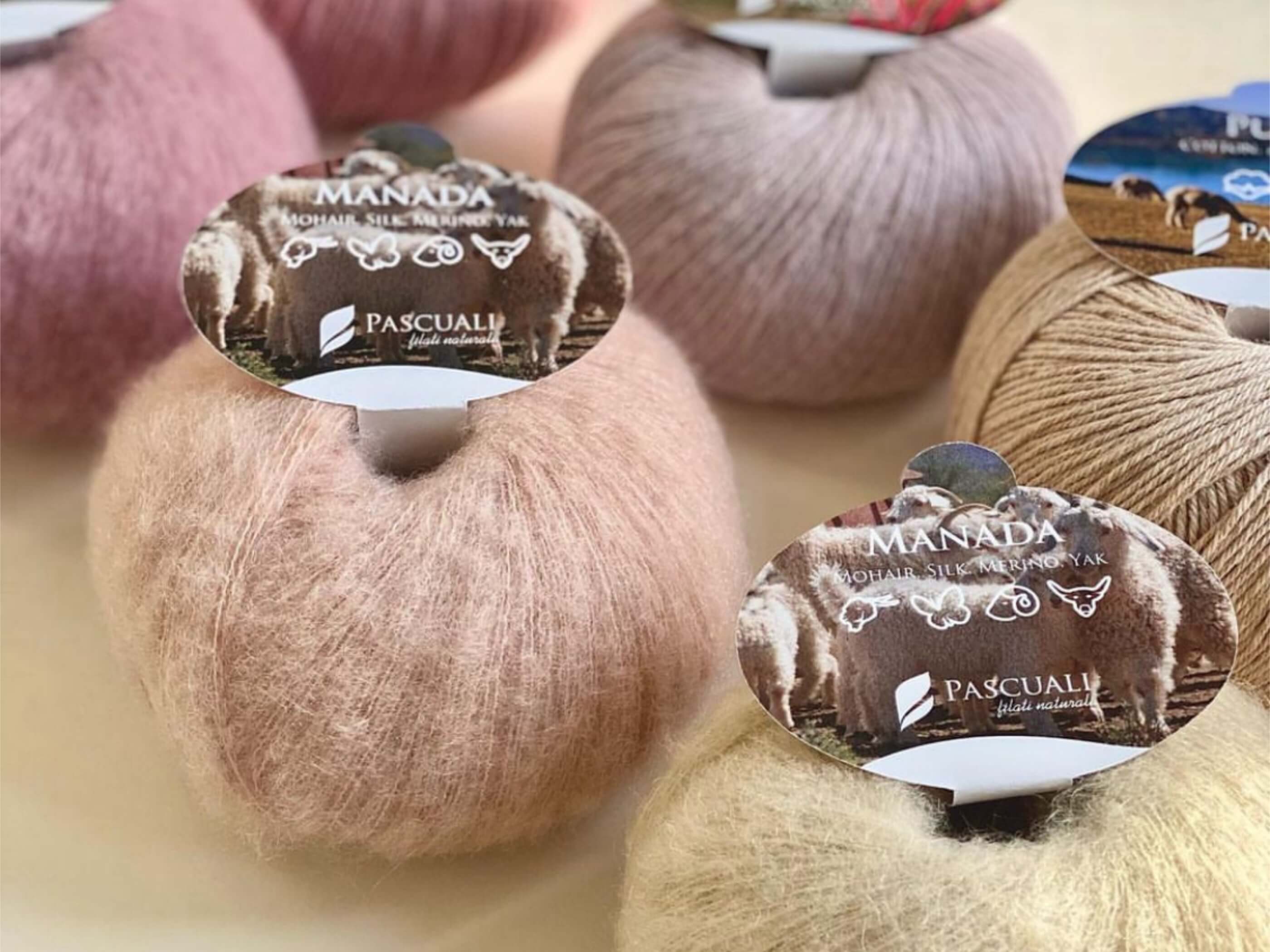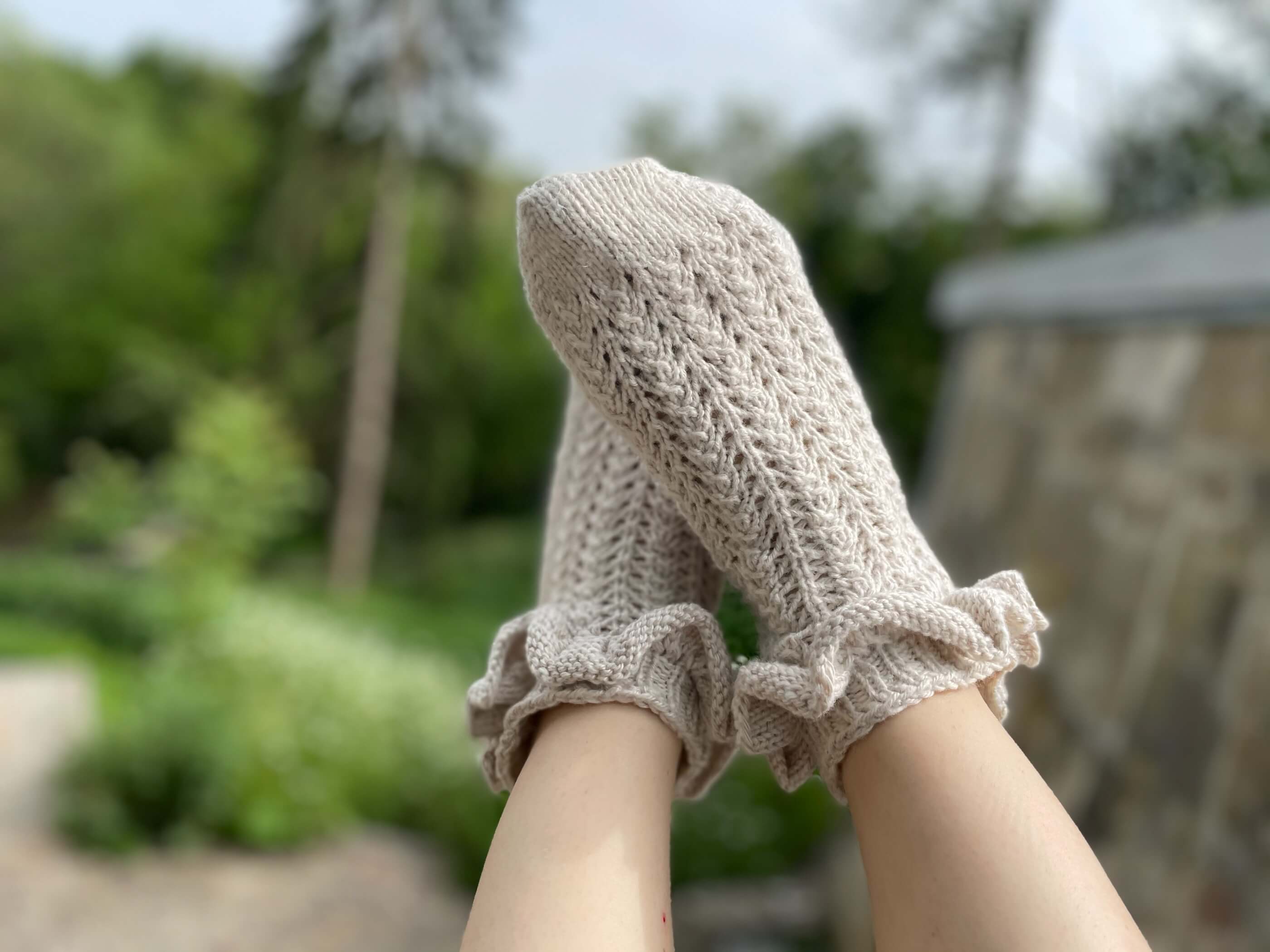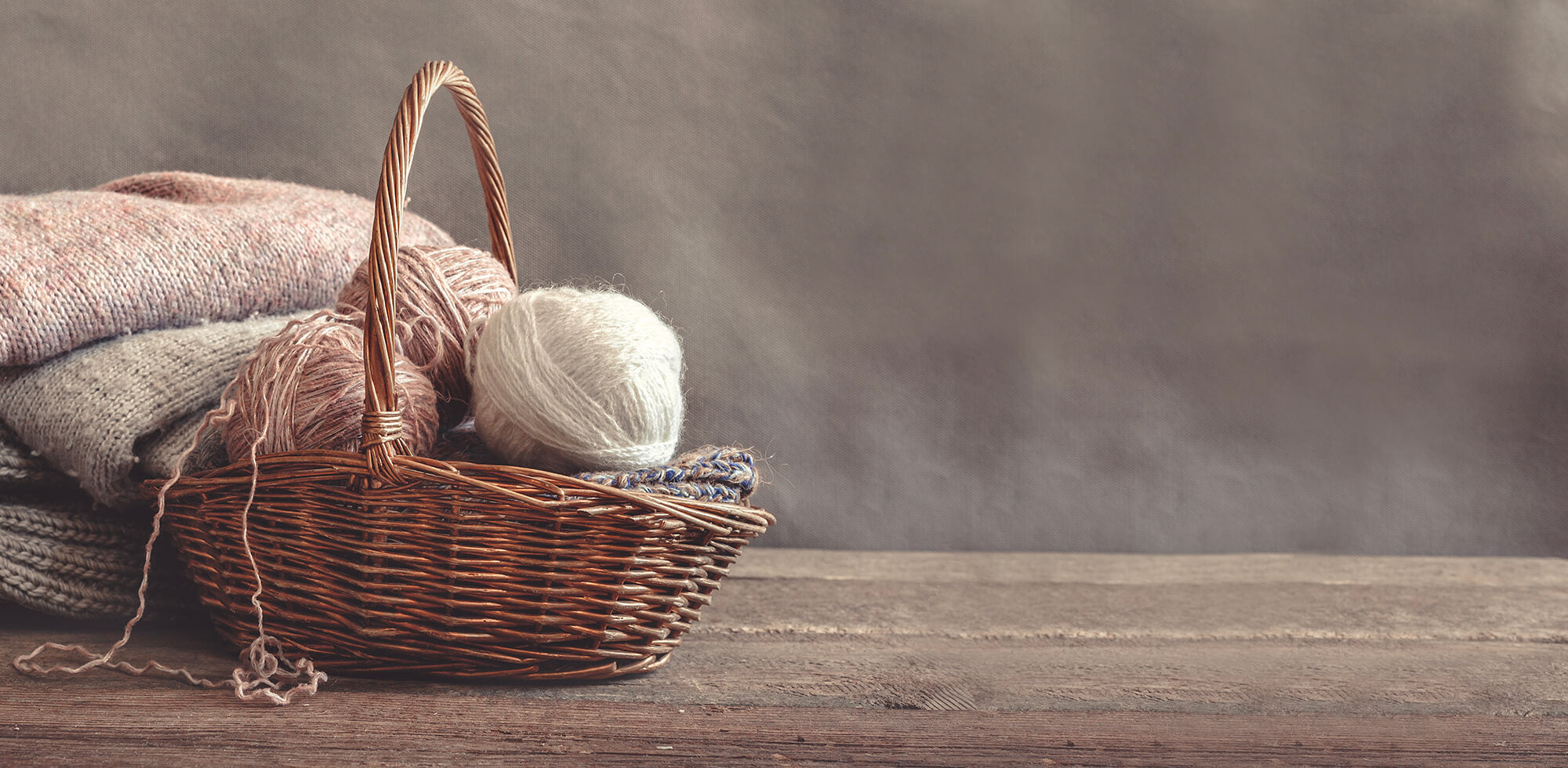By Claudia Ostrop
Merino, alpaca or cashmere – most everyone is familiar with them. After all, it's about wool and the associated "producers". But yak? What is that?
Yaks are native to Central Asia. Their undercoat is so soft that it can be spun into wool which can easily match the softness of cashmere. Our new yarns Manada and Tibetan contain this noble fibre - reason
enough for us to introduce you to yaks!
What is a yak?

A yak is an impressive, large, bulky, heavy long haired ox; a direct descendant of the bison. Because of its grunt-like utterances, domestic yaks are often referred to as “grunting oxen." They have extremely long, dense, shaggy hair that reaches almost to the floor on their belly and a horse-like, bushy tail. Their foreheads are wide with smooth horns that shoot out from the sides and in male bulls curve forward. Depending on the breed, yaks can reach a hight of over 3.28 ft (1 meter ) at the withers.
The Natural Habitat of Yaks
Yaks are native to Central Asia. There are an estimated 15 million domesticagted yaks around the world today. 12 million live in China, mostly in Tibet, and 600,000 in Mongolia. The rest are held in India, Bhutan, Nepal and Kyrgyzstan. There are also domesticated yak populations outside of these core regions, but these are not significant in terms of numbers.

In addition to domesticated yaks, there are also wild yaks. With only a population of around 10,000 animals, they are now threatened with extinction. They can only be found in mountainous areas that are uninhabited by humans, such as the Himalayas or the Tibetan plateau, where the animals live in herds at an altitude of 13,000 to 19,500 ft (4,000 to 6,000 m).
Yaks feel particularly comfortable in regions where it is really cold. Temperatures over 68 °F (20 °C) are a real problem for these animals because their heavy coat does not allow heat to escape. They can, however, withstand temperatures as low as -58 °F (-50 °C).
What Are Yaks Used for?
Unlike other cattle, yaks are not kept for just one single purpose. Yaks produce milk, meat, wool and leather to its keepers in the mountains of Central Asia. Yaks serve as a beasts of burden and their dried droppings are used as fuel.
Yak Wool
Of course, what interests us most is the wool! The yak is a unique animal with a multilayered fur coat, which is also particularly dense. The layer on the outside is charaterised by long. firm hair; the middle layer consists of a coarse transition wool; and the inner layer, which is found directly on the skin, is made up of short, exceptionally fine hair, also known as fine down. The proportion of the down hair in adult animals is 20 percent, the wool 30 percent and the outer hair 50 percent. Around 400 hairs grow on 0,155 in2 (1 cm2 ). For comparison: on our heads, there are 70 to 100 hairs on the same surface! During the (very) cold months, there is a strong growth of the undercoat and the top coat thickens. These different hair fibres trap a great deal of air, reducing the loss of body heat to a minimum and making the animal insensitive to cold.
How is Yak Wool Harvested?

The wool is harvested after winter, before it is shed in the summer time.
The animals are shorn. Sometimes the down is combed prior to shearing so that not too much fine wool is lost. As a rule, the down fibres are used for the production of yarns. The farmers who work for us, also shave the animals' legs. Otherwise, the yaks feel uncomfortable and no longer eat.
On the farm, the fibres go through the first processing steps: First, the fibres are separated by colour and washed by hand. There are three different colours: dark brown, gray and natural white. This is followed by a step that is extremely important for the high quality of the yarn: The outer hair is separated from the down because only the down can be used for fine and soft yarn qualities. The top coat, which serves the animal as external protection against wind and weather, is very coarse and thick and would lead to a very scratchy yarn. Through this necessary process called carding, small dirt particles are also removed. In order to achieve a very good quality, the fibres go through this process at least ten times. After this step, only 40 percent of the initially shorn fibres are left. The remaining fibres are used by the farmers to make tents and ropes, but can also be used to make the inner lining for winter jackets, for example.
Although yaks are incredibly large animals, the wool yield is not particularly high: 500 grams of crude fibre can be “harvested” from one yak per year. After processing, however, only around 200 grams of fine fibres remain per animal. This corresponds roughly to the amount of fine wool that you get from a cashmere goat. For some years now, the aim of breeding has been to increase the wool yield.
Yak Wool: Almost as Fine as Cashmere
After carding, fibres with a fineness of approx. 16 microns and a length of 34 to 36 millimeters are left for further processing. For comparison: the finest royal alpaca fibre has a fineness of 19.5 microns. Our yak yarns are much finer than alpaca yarns!
Its delicacy makes yak fibre particularly pleasant on the skin. It is exceptionally soft and very cuddly. It is perfect for even the most sensitive skin: it is not itchy or scratchy. It is also mostly well tolerated by allergy sufferers. Yak wool is particularly light, but still robust. It keeps you warm even in icy temperatures. Since it can absorb around 30 percent of its own weight in moisture, it has excellent thermoregulatory properties and keeps you dry for a long time.
Compared to cashmere, yak wool is an absolute rarity: 15,000 tons of cashmere fibres are produced to meet the required amount needed for yarn production worldwide per year. In comparison, only 4,000 tons of yak fibres are produced.
The yak´s fine down is one of the finest fibres in the world!
Yaks for Pascuali

The fibres for our yarns come from yaks in Mongolia. The animals are kept there in the traditional way by nomads and live in herds of 150 to 200 animals. The working conditions of the people and the living conditions of the animals are extremely important to us. We always want to offer our yarns with a clear conscience, which is why we personally check the conditions on site.
Caring for Yak Wool
So that you can enjoy a self-knitted piece with yak wool for a long time, simply follow the care tips that we have already put together for wool in general.
In a nutshell: As with any other type of wool, yak wool is inherently dirt and odor repellent, so it is usually sufficient to let the garment ventilate properly for self-cleaning. If you have to, a lukewarm bath with a wool detergent – we, of course, recommend our Wool & Cashmere Organic Detergent - is advisable. Your knitted item should always be dried lying flat. If pilling lumps do form, it's best to use a lint razor to tackle them.
Have fun knitting and, of course, wearing our yak wool!!



